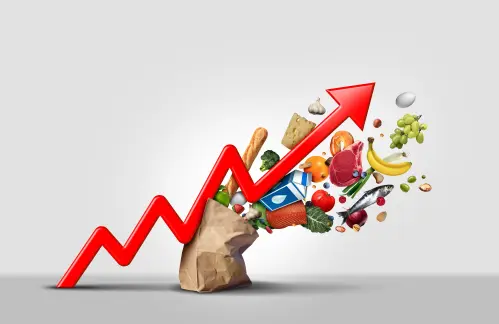What’s the latest thinking in fiscal and monetary policy? The Hutchins Roundup keeps you informed of the latest research, charts, and speeches. Want to receive the Hutchins Roundup as an email? Sign up here to get it in your inbox every Thursday.
Cash transfers to families with infants have large effects on children’s outcomes
Leveraging eligibility rules for child-related tax benefits like the Earned Income Tax Credit, Andrew Barr of Texas A&M, Alexander Smith of West Point, and Jonathan Eggleston of the U.S. Census Bureau find that cash transfers to low-income families following the birth of a first child have large and persistent long-term benefits. In particular, children born right before the New Year (and hence entitling their families to larger refunds during their first year of life) had higher test scores in school, got suspended less frequently, and earned nearly 2% more as adults than their peers who were born after New Year’s. The authors find that the longer-term effects on earnings alone are large enough that the transfers pay for themselves through higher future federal income tax revenue. Further, they find that, per dollar spent, the effects are larger than those generated by high-quality preschool programs.
Dividend futures imply modest GDP underperformance in 2023
Worldwide stock indices have been dropping this year, fueling fears that the equity market is reflecting a growing recession risk. Since market expectations about future dividends provide a signal about firms’ profits, an important component of GDP, they serve as a measure of expectations about economic growth. Using futures contracts on dividends, Markus Ibert, Ben Knox, and Francisco Vazquez-Grande of the Federal Reserve Board find that expected dividends are about unchanged for 2022 and have declined only modestly in 2023. The decline in expected 2023 real dividends translates into a 0.4-percentage-point downward revision in 2023 GDP growth for the U.S. and a 0.9-percentage-point downward revision for the euro area, they report, noting that this outlook is less pessimistic than the predictions of many professional forecasters. The authors conclude that this year’s falling stock indices have been driven by rising long-term interest rates, rather than changes in cash flow expectations.
Startups commercialize more innovative research than academic institutions or existing firms
Startups play an increasingly dominant role in the commercialization of novel research. Using data on patent grants over the 2000-2015 period, Julian Kolev of the U.S. Patent and Trademark Office, and Fiona Murray, Alexis Haughey, and Scott Stern of MIT find that patents from startups are more original and valuable than those from universities or incumbent firms. Specifically, the authors find that startup patents are cited 20% more frequently in future patents than those from universities or incumbent firms in the first five years, and that the “startup advantage” increases over time. Startup patents also rank about half a standard deviation higher on measures of originality and generality than patents from incumbent firms. The startup advantage persists even as firms scale up; within 15 years, former startups generate more citation-weighted patents than pre-existing incumbents. Startups may pursue research that incumbent firms consider high risk or may pursue more innovation because they are less likely to have existing market share to protect, the authors suggest.
Chart of the week: Liquefied natural gas prices in Europe exceed Asia and US

Quote of the week:
“Inflation is likely to be higher during the long transition to net zero [carbon emissions]. Higher energy prices will feed through into the production of many goods, and prices overall will rise. The Bank of England estimates inflation will increase by nearly 0.6 percentage [points] by the early 2020s if there is an orderly transition to net zero and 2 percentage points by the early 2030s if the transition is disorderly. We are probably seeing a preview of that scenario currently,” says Ravi Menon, Managing Director of the Monetary Authority of Singapore.
“But it’s not just energy prices. Demand will surge for minerals such as copper, aluminium, cobalt, lithium, nickel, and rare earths, which are critical to various clean energy technologies, including wind turbines and electric vehicles. For example, solar or wind power plants use up to six times more copper than conventional power generation. According to the IEA, a world on track for net-zero in 2050 will need six times as much of these materials in 2040 as it does today. The result is greenflation, or rising prices for these metals and minerals that are essential to renewable energy and technologies.”
The Brookings Institution is financed through the support of a diverse array of foundations, corporations, governments, individuals, as well as an endowment. A list of donors can be found in our annual reports published online here. The findings, interpretations, and conclusions in this report are solely those of its author(s) and are not influenced by any donation.





Commentary
Hutchins Roundup: Cash transfers to families, startup research, and more
August 25, 2022